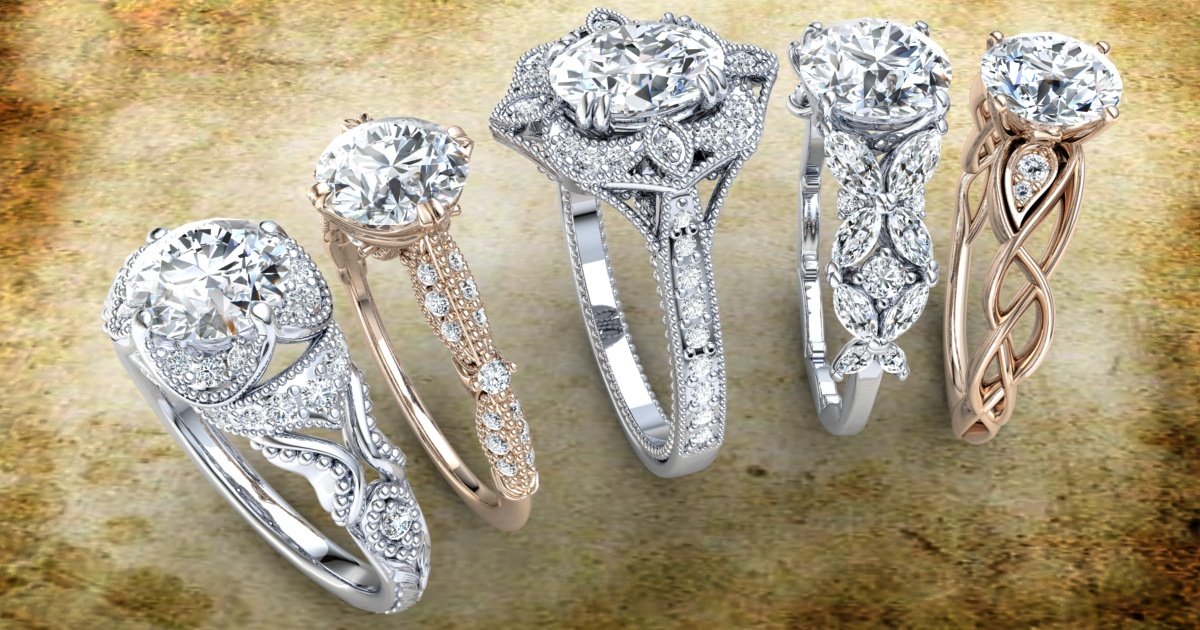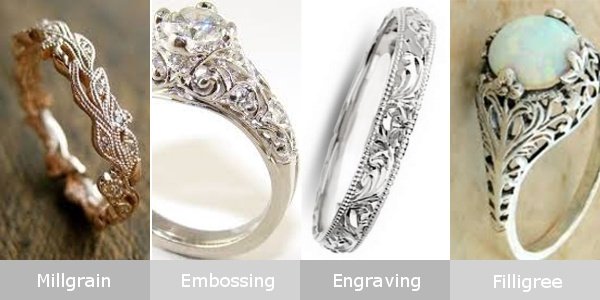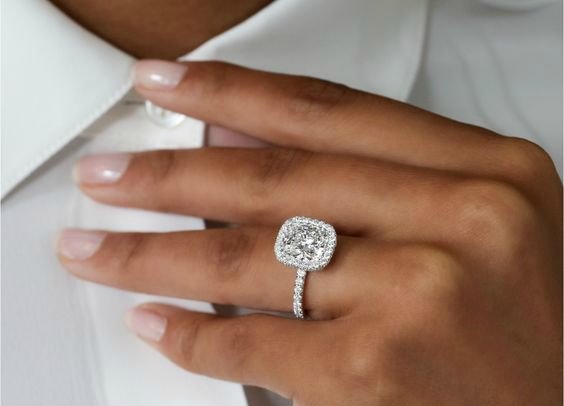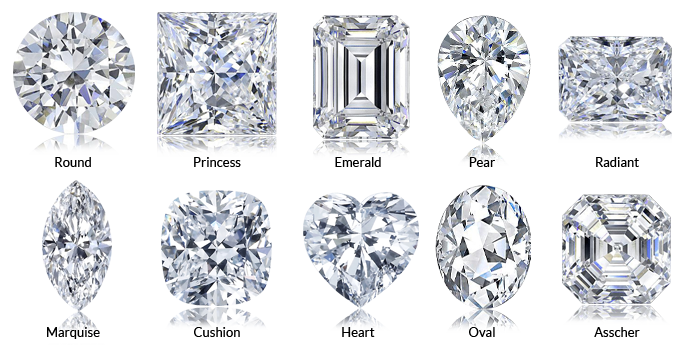The two most popular engagement ring styles at this stage are simple solitaires… and intricate vintage designs. Polar opposites.
I nabbed our head of design and one of his team members for some good old feedback on common questions in the realm for vintage engagement ring design. Both have done stellar jobs at creating vintage designs over the past few months.
If you have any questions after this – get in touch. I’m sure these two would love to chat you through any further details.
Hi gents, do you enjoy designing vintage style rings? If so, what draws you to this style?
C: Oh yes. It is a challenging style, if you want to show off your A-game, this is one of the places to do it. You usually also have a distinct mold to fit for any given client. I love figuring that out and nailing the design.
Progression
M: As an expression of creativity, I love to design vintage rings because, in the broad vintage category, there are a lot of styles that can be used or combined, and a lot of components and details that I can play with when designing a ring. Lots of love and attention needs to be given to assure all these aspects relate in harmony to one another.
As an artist, what does the term “vintage” mean to you? How would you define the term?
C: Vintage always stands in contrast to what is considered modern at the time. As a designer you are always pushing to know what is edgy, to stay relevant and to know what style and themes resonate with your clients. The thing about great design is it stays great. It usually just needs a new application. That is what the vintage style becomes. It holds together the design ideas that do not quite fit into the crashing wave of what is current, but is too good to be discarded, and presented to the right audience it will always receive a warm reception. Ironically enough, it is my experience that it is usually this audience that gradually builds the next crashing wave of what is current.
M: Vintage for me is a term used to describe a modern design that is based on, or inspired by the designs of an older era, like art deco, baroque, romantic art nouveau and classical periods.
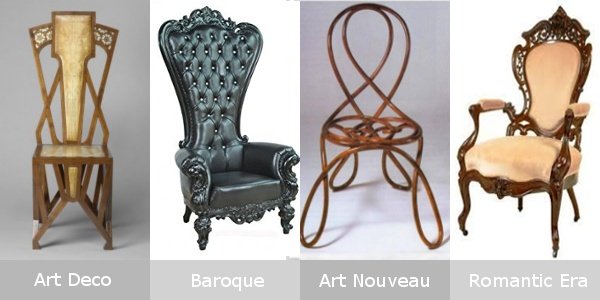
*A little fun… which chair do you like best?
Back to 2017, what does “vintage” as a style encapsulate? What elements make a ring vintage?
C: The general feel of the ring is that of an old fashion ring that has been freshened up. You will find detail covering the whole ring or maybe just a single section. The typical candidates are engraving, embossing, filigree, and mill grain. The style also makes lovely use of both geometric and organic themes.
M: Vintage loves detail most of all, from filigree (wire work that is formed in beautiful patterns) to mill grain (tiny spheres pushed on edges), to baskets, clusters, galleries and a lot more. Vintage is both a celebration of diamonds and metal design. Vintage design is busy and is worked off with fine work more often than not.
As a modern style, what anchors a vintage design in previous eras like the Gatsby days?
C: This style harkens back to the baroque and romantic eras. The jewellery and craftsmanship of those days were legendary. There was intricacy worked in on every level of the designs. A piece was designed to form a whole and with someone in mind, not just a setting thrown onto a band and stuck on a finger.
M: Jewellery is one of the oldest art forms in human history, and has developed with us on our journey through time, and still is developing. So “vintage” as a modern design uses styling of yesteryear and incorporates it with the technologically advanced and market relative jewellery requirements of today. The above-mentioned design components have been tried and tested through time to be both appealing and successful to reuse even until today. It is marrying these old styling techniques and modern design requirements that make a good “vintage” design.
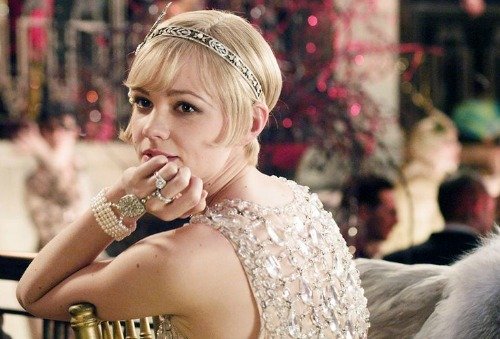
What are your go-to techniques for putting a vintage twist on a modern setting? Some low hanging fruits to pick?
C: The no-brainer would be mill grain. This is a technique used to cover any fine edge with a series of tiny balls (think 0,3mm tiny). It gives the design a subtle hint of detail and some texture. We can use it to frame the diamonds or highlight a particular feature. And the visual effect just feels antique.
M: Figuring out what era to draw my inspiration from is always the first focus as it guides the design in the right direction. I love starting my design with a good dimensionally rich foundation, but I generally tend to resort back to the use of mill grain and/or filigree. It really is amazing how just adding mill grain to a plain design can convert it from a classic ring to a vintage ring.
*Here’s a pretty straight forward design, jazzed up with mill grain, rose gold and multiple bands. A wonderful combination.
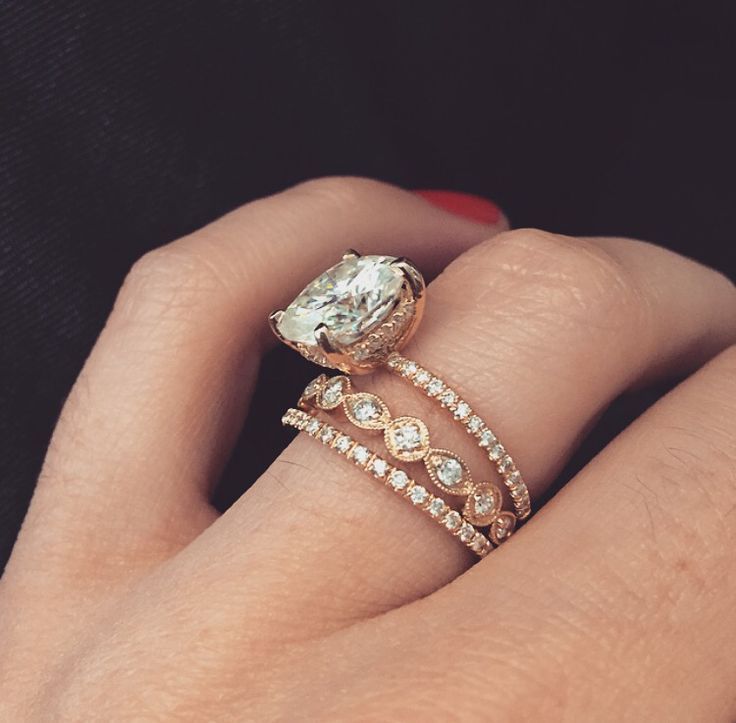
As a modern style that continually changes form, is there any specific vintage element that you would say is currently popular but might fade away?
C: I see quite a couple of designs that have a high level of detail at the bottom of the ring. Now, I am all for embellishing the whole of a ring, it looks amazing. However, especially in the case of an engagement ring that gets worn every day I believe that practicality always wins out. If the side image of a ring is too elaborate two things happen.
Firstly, any design that adds thickness between the fingers will be uncomfortable to wear. We jokingly refer to this as a Yo-ring if the sides of the ring are so thick that wearing it contorts your hand into some obscure form of gang insignia, right at home in a hard core rap music video.
Secondly, the bottom quarter of a ring takes the most abuse. I do not care how delicate you claim your beloved is with her hands, that bottom section of that ring will look like it has badly lost some cage fights at the end of a couple of months. Now, we are aware of that and design accordingly, but what do you think happens when we cram that particular section full of our most finely crafted detail?
I predict that the bottom half of a ring will see a diminishment in detail.
vera
The appeal of a vintage ring is very personal. It’s not for everyone. How do you know what to make the essence of each design?
C: First prize is to sit with the client in their consultation. I like to get the feel for my client and ask some tailored questions. I pitch contrasting elements against one another and monitor the response I get. A couple of rough free hand sketches later and I am pretty confident I will know what design to do for you.
Pro tip guys; in my experience, if a girl loves the vintage style and gets the feeling you might pop the question soon (they have a weird 6th sense about this!) she will start collecting images of rings and designs she loves. If she has a Pinterest account, or any place she hordes photos, that is your gold mine. Just bring me a hand full of these pictures from her stash. I know what to look for and will find the common denominator. From there it is easy.
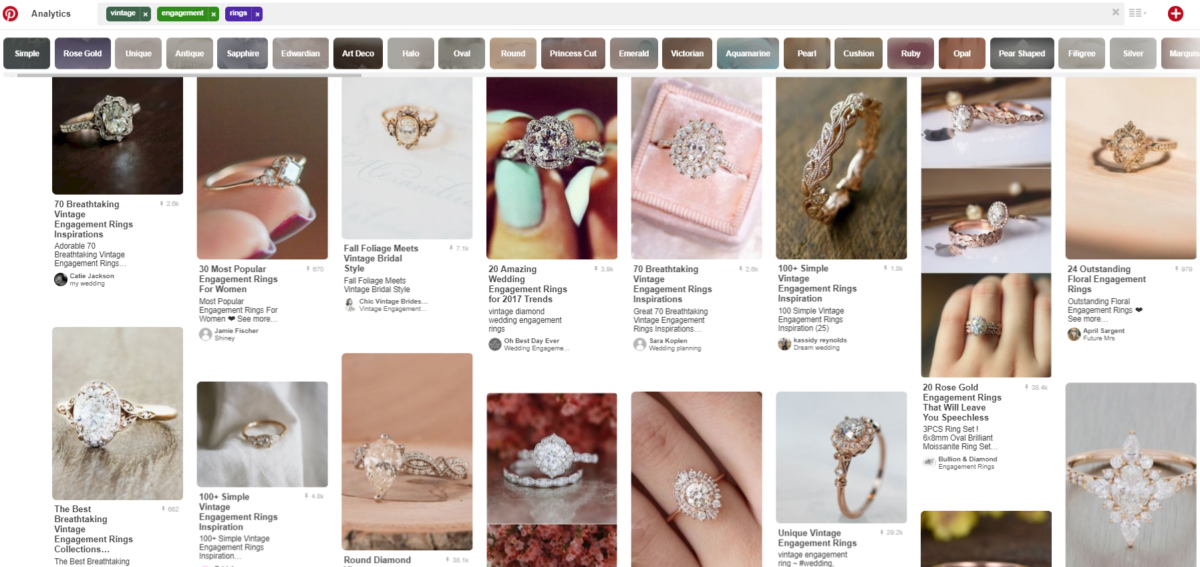
M: There is a twofold answer to this question. If I have the freedom to generate a new design, then years of experience guides my focus to what design will appeal to most, this depends on the relationship of geometry, proportion, form detail, symmetry, and much more. If I had to design for an individual client, finding the direction of focus becomes increasingly simpler. At a consultation we can gather information from pictures and ideas the client may have, preferences in metal type and gem shapes and size, skin tone and proportions, a light summing up of the wearer’s personality and what industry they work in (for practical reasons).
Every design style has its own limitations. What would you say is the #1 issue when creating a vintage design? What would you say are the common pitfalls to consider when taking on a vintage design?
C: Size. Size. Size. The number one request I get on job cards and when I join in a consultation is to make the ring as delicate, fine, and low as possible. No problem. I have a myriad of ways to do this for you without ever compromising on the structure of the ring. If I design you a ring, that bad boy will last you a life time.
Problem is, the vintage style is all about detail. And for detail to look amazing it needs some breathing space. Love that intricate little scroll work on the side of your ring? Great! But I would need to raise your center stone ever so slightly above minimum height. Enjoy the fine finish that mill grain gives you? Love it! But your ring will be slightly bigger than that sweet super fine halo ring in our display case. (Link to Leila)
I see a lot of requests for custom vintage designs that feature overly fine detail. They’ll do as high day and holiday rings, but how do you ensure these fine designs are durable for everyday wear (as engagement rings)?
C: This is linked quite strongly to the answer above, but let me get a little technical here. We have a set of checks, minimum thickness, and guidelines that we use to ensure the durability of our designs. I won’t bore you with a chart of numbers, but know it does exist. Here your metal choice comes into play. We have waxed lyrical (Pd blog link) about the benefits and superiority of Platinum and Palladium over any other white metal. The metal is simply stronger so when I draw a ring to be made in Platinum or Palladium my minimum thickness is simply lower than with any other metal. I would like to give Rose gold an honourable mention here as well. It is has a tenaciousness not shared by the other gold alloys and I am happy to drop my minimums for it as well when it comes to detail. Not as much as Palladium or Platinum, but it holds its own.
We also have a couple of tricks up our sleeves. Easy example, let’s say you want a ring with super fine filigree detail (little wires bent into shapes). Instead of doing a pure round wire I will make the cross-section egg shaped, with the thicker part to the inside of the ring. This places my structural integrity out of sight and makes the detail look way finer than it actually is.
M: This is always a relationship of compromise between the client, the designers the manufacturing process and the manufacturing team and the setters. The clients almost always want the detail as fine as possible, and it looks gorgeous, but the printing machine has certain tolerances, casting needs a certain metal thickness for the molten metal to flow to all points, the manufacturers need a bit of excess metal to refine the piece to a brilliant polish, and the setters need more metal to ensure that the structural integrity of the setting holding the gems in place is properly secure. Between the clients’ compromise of being mindful of the manufacturing requirements and the manufacturing team stretching the limits of what is possible whilst maintaining a good product quality, there we find the best middle ground.
If you sit down to create a signature vintage piece for our catalogue which diamond shapes simply fit the mold best?
C: I will admit a slight bias here… I’d go for the cushion cut. It just fits the theme better, darn it! You can find a treasure trove of information on diamond shapes here.
*Even a rather plain setting, like the one below, just looks more vintage when set with a cushion cut diamond…
Ok, I’ve got that out of my system, so let me give you some things to consider. A cushion cut gives me a lot to work with. You have round edges, round corners but an overall square shape. So if I am doing a ring with an elaborate top it anchors the design by designating the top into four quadrants yet keeps the design soft and rounded. You also get pure square as well as more rectangular cuts, each one pulling the design into its own direction. A cushion is also cut deeper than most other stones so I naturally have height and volume to work with.
But the main reason is a cushion cut has the most brilliance of all the diamond cuts. When you look into a cushion there is a lot more happening on the inside, it is near impossible to track any individual facet. And the design mimics that. We have detail everywhere.
M: The hottest is always brilliant round, followed by the cushion and oval cuts. Less popular, but still regularly used are pear shapes, marquise and trillion cuts. in terms of smalls, we use 99% brilliant round cuts. For me personally, using a brilliant round is a safe option. With ovals, pears, marquise and cushion cuts, my options expand to more dynamic designs, with new possibilities.
Popular diamond shapes;
*View current specials by clicking on a ballpark budget you have in mind; R15 000, R30 000, R50 000, R70 000 and up to/over R100 000.
Drawing on years of experience, what would your basic advice be to a couple considering a vintage engagement ring?
C: Spend time with the style. An engagement ring is not unlike a tattoo. It is a design that you will spend a lot of time looking at throughout your life and it has significance for both of you. Make sure it is not something you might get tired of.
If you’re having a hard time choosing a style, we have some great practical guides that can help you narrow down the search;
- Choosing A Custom Engagement Ring Design – Personal Style and Budget
- Lifestyle Considerations When Choosing An Engagement Ring: Comfort.
- Lifestyle Considerations When Choosing An Engagement Ring Design – Wear and Tear.
Build up a library of images that you both like. Vintage has a wide appeal and I spend a lot of my time figuring out what is the correct fit for you. If you give me some pre-approved pictures it makes my job easier and we can spend more time on fine tuning.
Lastly, for you who are considering a vintage style engagement ring, we as designers love you. We draw a whole lot of run of the mill pieces, and that is great and has its place. But the ring that requires us to properly design wakes put the artist that got us into this field in the first place. So give yourself a high five and drop us an email and see what we can do.
M: In all honesty, problems and possibilities can vary so much, that a simple bit advice may not be specifically valid to any reader that wants to get engaged, especially with a vintage design. Therefore, my best advice is to come in for a design consultation. Here we look at everything that needs to be considered for your individual design specifications to ensure you get the perfect project.
Would you like to have a chat about a custom vintage engagement ring?
You can give the same ideas, images and specifications to 10 designers… and you’ll receive 10 different designs.
A vintage ring can quickly look like a Royal Cluster F. Believe me.
This is definitely the hardest style to execute in perfect harmony. Although our quotes will probably be the best, keep in mind that your choice of jeweller should be made based on the quality of design and their thorough understanding of how to make a vintage ring work. Never on price. Especially not when you’re looking for a custom vintage design.
Keep in mind we don’t change a consultation fee. You’re more than welcome to visit us, even just for a chat.
I’m confident that after a coffee with any of our designers you’ll know you’ve found your jeweller.
Feel free to reach out via info@poggenpoel.com or via Facebook and Instagram.
Final thought;
Kind Regards,
Johan Poggenpoel, Co-Founder.
T; 012 111 0525 (Pretoria) | 010 020 6811 (Johannesburg)
E; info@poggenpoel.com
Instagram:https://www.
Facebook; www.facebook.com/poggenpoel

